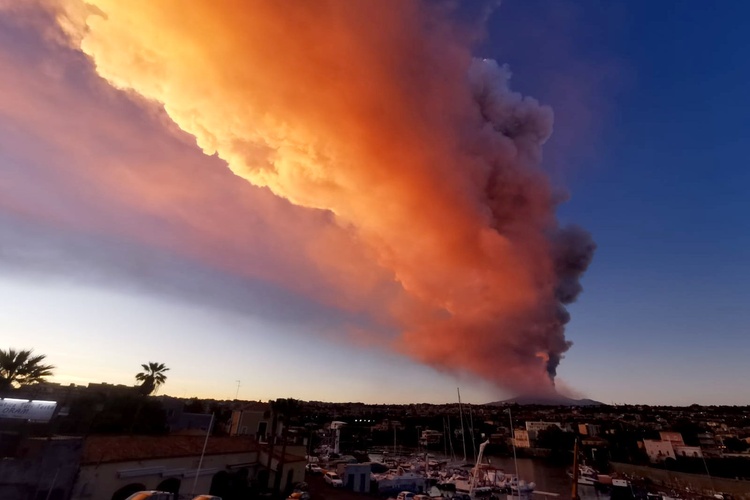Authorities said the eruption posed no threat to the villages below.
“We’ve seen worse,” the head of the INGV National Institute for Geophysics and Vulcanology in the nearby city of Catania, Stefano Branco, told Italian news agency AGI.
Estimating that the eruption from Etna’s relatively new southeastern crater began late on Tuesday afternoon, Branco insisted that the latest burst of activity was “not at all worrying”.
Nevertheless, with small stones and ashes raining down, authorities decided to close Catania’s international airport, which lies 60 kilometres south of the volcano.
The emergency authorities said on their Twitter account that they were monitoring the situation closely in the three villages at the foot of the volcano: Linguaglossa, Fornazzo and Milo.
Images showed a spectacular rose-coloured plume of ashes above the snow-capped summit, but the cloud had largely dissipated by nightfall, while lava flows continued to glow.
At 3324 metres, Etna is the tallest active volcano in Europe and has erupted frequently in the past 500,000 years.
The last time Etna erupted was February 3.












